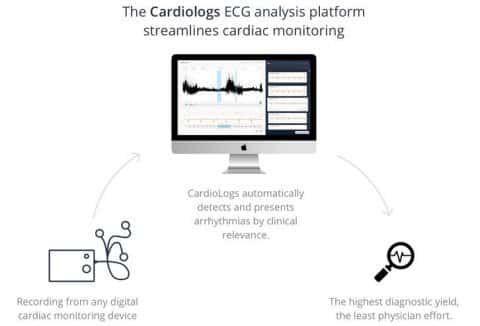Heart disease is the leading cause of death in the United States and currently affects an estimated 28.4 million Americans. According to a report published by the American Heart Association, in 2016, the economic burden of cardiovascular diseases (category of heart and blood vessel diseases) totalled $555 billion and is projected to reach $1 trillion by 2035.
Compelled by these statistics, researchers are exploring how artificial intelligence could turn the tide and reduce incidences of heart disease.
To gain insight on the role of artificial intelligence in addressing heart disease, we researched this sector in depth to help answer questions business leaders are asking today, including:
- What types of AI applications are currently in use to manage heart disease?
- How has the market responded to these AI applications?
- Are there any common trends among these innovation efforts – and how could these trends possibly contribute to reducing the rates of people living with heart disease?
In this article we break down applications of artificial intelligence in managing heart disease to provide business leaders with an understanding of current and emerging trends that may impact their sector. We’ll begin with a synopsis of the sectors we covered:
Heart Disease AI Applications Overview
Based on our assessment of the applications in this sector, the majority of AI use-cases for managing heart disease appear to fall into three major categories:
-
- Medical Imaging: Companies are training machine learning algorithms to improve the accuracy of patient scans to better detect disease.
- Risk Prediction: Companies are using machine learning to predict the risk of cardiovascular disease and its related impacts.
- ECG Monitoring: Companies are using deep learning to help automate the process of Atrial fibrillation (AFib), the most common abnormal heart rhythm.
In the full article below, we’ll explore the AI applications of each application by section and provide representative examples.
Medical Imaging
Analytics 4 Life (A4L)
Emerging from Johnson and Johnson’s incubator division, JLABS, Analytics 4 Life (A4L) is reportedly developing a machine learning algorithm to non-invasively (without radiation or accelerating the heart) detect coronary artery disease (CAD).
The company claims that it is training its algorithm on billions of clinical data points captured from images of coronary arteries (major blood vessels) and results of a special x-ray procedure called a coronary angiogram which detects blockages in arteries.
As a result, the platform called CorVista™ would learn to detect CAD using pattern recognition. Ideally, CorVista™is designed to work in a “single office visit without radiation, exercise, or pharmacological stressors using signals naturally emitted by the body.”
The 2:44 minute below provides a demo overview of how CorVista™could be implemented in the clinical setting:
According to the JLABS announcement, the CorVista™ initiative launched in January 2017. The product is not yet commercially available as it is still in the testing phase and under “clinical investigation.”
Zebra Medical Vision
Founded in 2014, Zebra Medical Vision claims that its algorithm can serve as a early detection tool for risks of cardiovascular events. Coronary artery calcium is considered an indicator of coronary artery disease. By quantifying the amount of this calcium that is present in the body, it can help clinicians predict the risk of a cardiovascular event such as a heart attack.
The company’s Coronary Calcium Scoring algorithm is trained on millions of imaging scans to automatically calculate a score, helping to quantify the amount of calcium that is present and make predictions regarding patient risk.
The brief video below provides a walkthrough of how to navigate the Zebra Medical Vision platform:
Zebra Medical Vision claims that its platform currently reaches 1,100 hospitals and providers. Case studies providing specific evidence of the Coronary Calcium Scoring algorithm on patients are not currently available.
The company’s network of partners and clients includes Google Cloud Platform, University of Oxford and Cedars-Sinai. To date the company has raised $20 million in total funding.
Heart Disease Risk Prediction with AI
KenSci
Founded in 2015, Seattle-based startup KenSci reportedly uses machine learning to predict patient risks of acquiring diseases including heart disease. The company claims that its software platform draws from a database of over 150 machine learning models using algorithms trained on over 10 million data sets. Data formats include:
- Clinical data (patient health records)
- Financial data (such as patient insurance and hospital expenditures)
- Patient generated data (such as heart rate tracked by wearable technology)
The cloud-based software aggregates, cleans and analyzes client data to identify patterns which may indicate potential risks and provide predictive insights on healthcare outcomes. As illustrated in the image below, Kensci’s platform integrates with clinical systems such as electronic medical records (EMRs) so recommendations can be readily implemented by healthcare teams.

The 4:00 minute demo below provides an example of how the KenSci platform would be used to reduce the rate of hospital readmission among patients with congestive heart failure (CHF):
According to its website, Kensci claims its platform can deliver ROI to clients in 12 weeks and is providing predictive analytics on 17 million patients. However, case studies with evidence on how the platform is specifically impacting patients with heart disease is not currently available. Microsoft is among KenSci’s investors through the Microsoft Ventures Accelerator in Seattle. As of January 2017, the startup has reportedly raised $8.5 million in total funding.
Heartflow
California-based competitor HeartFlow offers a non-invasive solution to improve accuracy in detecting and diagnosing coronary artery disease (CAD). The company claims its software platform leverages deep learning to create a “personalized 3D model of the patient’s arteries.”
HeartFlow’s process begins by assessing data from patient scans of the coronary arteries. Deep learning is used to develop a 3D model of the patient’s arteries based on the data extracted from the patient’s images. Algorithms are then employed to “simulate blood flow and assess the impact of blockages in the arteries.”
The 3 minute video below provides a visual walkthrough of how the HeartFlow solution translates data into a visual model to help predict patient risk cardiovascular disease:
According to its website, HeartFlow’s technology is commercially available in the U.S. and countries such as Canada and Japan and has impacted over 10,000 patients. Results from a clinical study showed that after one year of using HeartFlow 117 patients who canceled an invasive coronary angiogram (ICA) did not experience an “adverse clinical event.” The study also claimed that these impacts translate to savings of 33 percent in healthcare system expenditures. Since the company’s launch in 2007, HeartFlow has raised $386 million in total funding.
ECG Monitoring
Cardiologs
Founded in 2014, Paris-based startup Cardiologs claims that it uses artificial intelligence to “read ECG recordings from any digital device.” Examples of devices include a Holter monitor (portable ECG device that attaches to the body) or a smartwatch.
The neural network helping to drive the web-based platform was trained on over 500,000 ECGs. As a result, the system is able to recognize normal patterns and abnormalities in cardiac signals with comparable accuracy to a trained human specialist
The diagram below provides a simple overview of the process as explained above:

– Source
The company is still in the early stages of development and announced that it received its FDA clearance in July 2017. According to the press release, Cardiologs’ platform detects Atrial fibrillation (AFib) (most common abnormal heart rhythm) with 91 percent accuracy as compared to 59 percent using standard methods. Accuracy was measured using Positive Predictive Value (PPV). This is defined as the percentage of true positive cases among total cases detected.
Readers are encouraged to reference How America’s 5 Top Hospitals are Using Machine Learning Today to learn about ECG monitoring competitor AliveCor.
Concluding Thoughts
Addressing heart disease involves multiple approaches such as improving the efficiency of patient care and accurately predicting the risk of cardiovascular events. Current applications of AI appear to be making efforts to address these challenges.
Medical imaging may be one of the more saturated areas of AI applications, however, companies can continue to prove their value by providing solutions which reduce patient risk during imaging procedures. For example, reducing exposure to radiation and invasive procedures have potential to improve patient outcomes and reduce healthcare expenditures.
The potential for these applications to deliver ROI appears to be drawing the interest of investors such as Microsoft and Google who continue to make sizable investments in AI.
One challenge going forward will be how companies demonstrate their uniqueness and avoid over saturating the market. For example, it appears that applications focused on predictive analytics may expand quickly. Offering distinct features and approaches to predicting cardiovascular events will be important – and it’s unclear which companies will develop the sales channels or the critical product features to ensure market share. It may be another 2-3 years until such a clear leader emerges for AI diagnostics or treatment of heart disease.
The majority of use-cases do not appear to target individual consumers, and focus more on clinicians in the healthcare setting at this time. It’s like that individuals won’t care if AI is involved in their diagnosis or treatment, so long as it’s the best decision of their health. As we’ve addressed in past interviews (especially with healthtech investor Steve Gullans) on our AI podcast, artificial intelligence can be intimidating to doctors, and it’s unclear whether marketing the AI innovations in a product makes it more or less attractive to hospitals. At present, it’s a double-edged sword.
Header image credit: Medical News Today



















